Have you ever had an experience that was so frustrating it just about drove you to your wits’ end? Here’s the definition for that phrase:
At wits’ end
The idiom at wits’ end means to be very upset, or at the limits of one’s emotional or mental limitations.
That pretty much describes how I felt after a very long and very frustrating experience waiting for three suppressor tax stamps to get processed. I wanted to publish this story to both tell this story, and give a glimpse at what’s to come for suppressor content here on Ultimate Reloader!
SilencerCo Suppressors: Worth The Wait
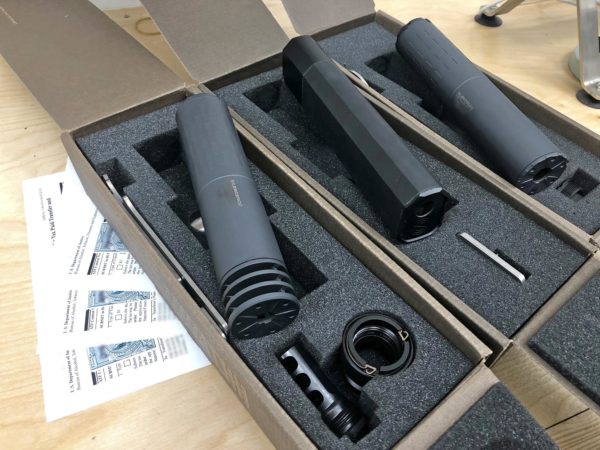
Pictured above, from left: Tax stamps, SilencerCo Omega 300, SilencerCo Osprey 45, SilencerCo Hybrid 46
I feel very fortunate to have the three suppressors pictured above! With the Omega 300, I’ll be able to use a direct-thread mount for either 5/8×24 muzzle threading, or 1/2×28 threading. This will cover pretty much every rifle configuration from 223 up to 300 PRC with the exception of calibers over 30 caliber (such as 350 Legend which uses a 0.355″ bullet).
That’s where the Hybrid takes over! Being a 46 caliber can, I can shoot large caliber rifle cartridges like 350 Legend and 45 ACP, and also go up beyond 300 PRC shooting cartridges like 338 Lapua and 300 Remington Ultra Magnum. The Hybrid can also accommodate semi-automatic pistols using tall sights or reddot/holographic sights, or even scopes.
The Osprey 45 is perfect for pistols! It’s got a lowered profile that preserves sight picture with iron sights like what you’d find on a Glock, 1911, or other comparable pistol configuration.
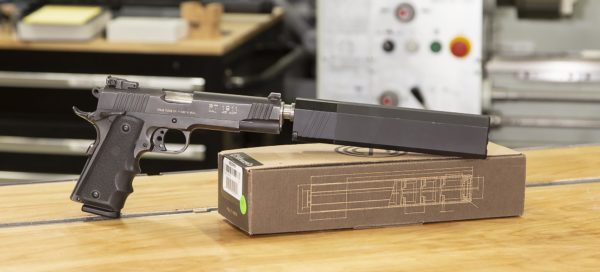
What’s Coming on Ultimate Reloader
These suppressors are fun, but they are also great tools for the ranch, and for stories/content. I’m very much looking forward to using the tools in my studio to measure velocities, take high-speed video, and more. There’s a lot of interesting reloading stories related to suppressors, and much more.
Here are some of the specific things I’ll be using these suppressors for related to content:
- Reloading ammo for suppressed shooting: subsonic, supersonic, etc
- Hunting with suppressors
- Effect of suppressors on recoil (with comparison to brakes, and no muzzle accessory)
- Exploration of ultra-slow-motion footage related to suppressed shooting
- Effect of suppressors on POI and accuracy
- Long-range suppressed shooting
- Component selection for suppressed shooting and reloading
- [FUTURE] measurement and analysis of noise reduction
Did I miss anything? Please leave a comment with your thoughts!
Don’t miss out on Ultimate Reloader updates, make sure you’re subscribed!
Thanks,
Gavin
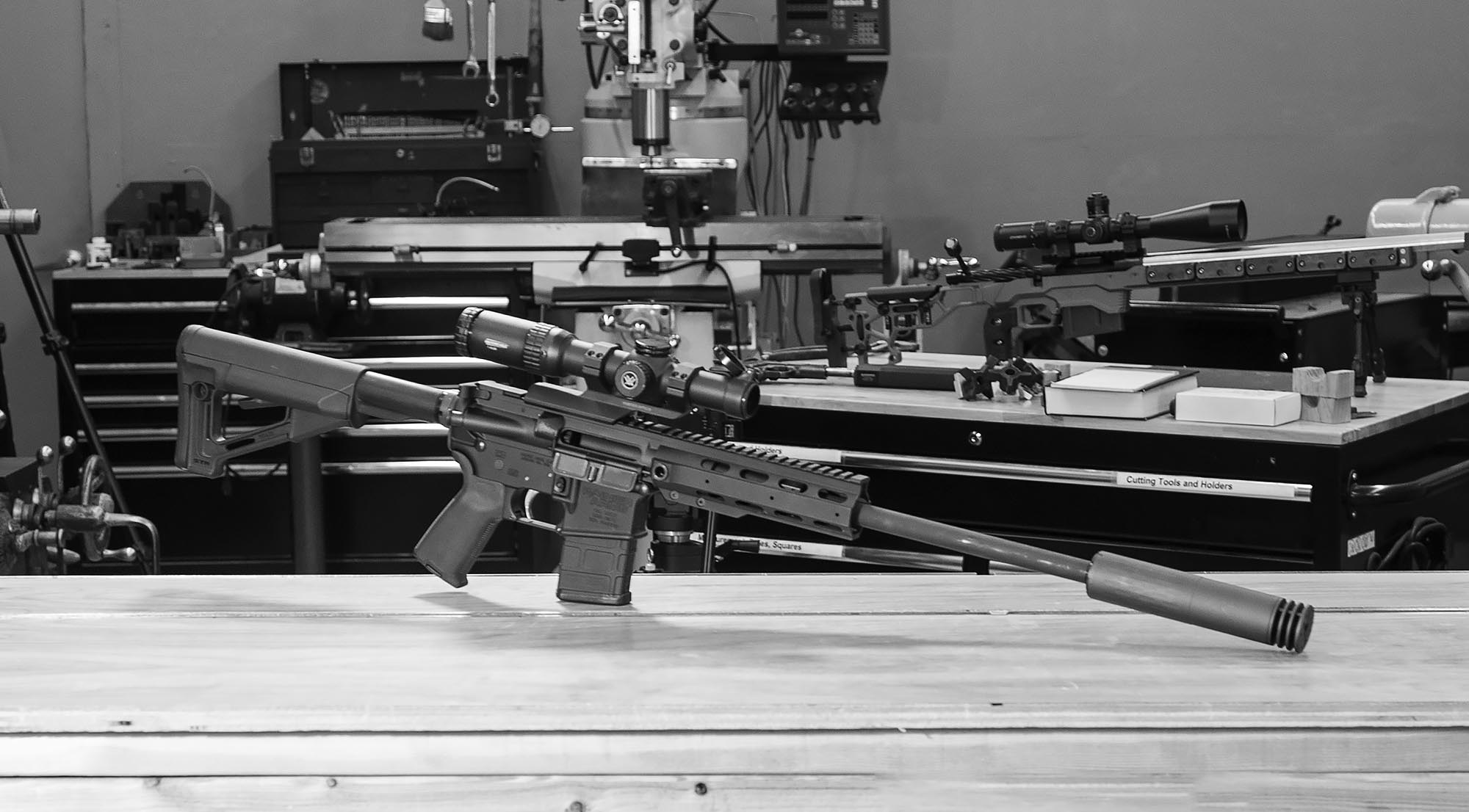
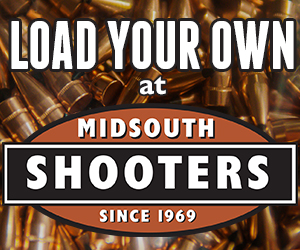









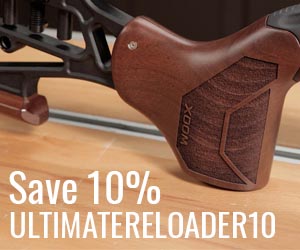




















































How long was your wait Gavin? I’m waiting for two.
What have you put in place for legal transfer in event if your death? Did you do s trust and if so what is the easiest method? I have only one suppressor so far.
Legal transfer method in case of death. What did you use? How easy is it to get?
That’s quite a saga! I wonder if you or anyone could comment about the current waiting times for NFA items?
Hey Gavin, I know that many people don’t like much math, but in this case, and as an engineer myself, I think suppressor testing is rife with data acquisition and analysis opportunities that can provide us with real insights. Some suggestions:
1. It’d be great to get sound data in dBs of sound level decrease for all tests, not only for each suppressor, but for each caliber. So in the case of the .30s, how much sound level drop do we get for the .308, 30-06, 300 Win mag, 300 PRC, etc.
2. Similarly, how much increase do we get in velocity for each of these? Do we lose (or gain) any accuracy with a can on the barrel?
3a. If you fire sub supersonic rounds, does the extra barrel length from the cans increase the velocity into the supersonic range?
3b. If so, does the can actually make the shot louder than it would have been without it?
4. What is the measured clearance, essentially, the delta between the OD of the bullet and the ID of the can? Having that with the sound and velocity data could give us insight into how that delta affects sound level and velocity.
5. And if you have any cans where you are willing to change the can ID by drilling it slightly larger, how much of an effect does that have? Now, I realize that, between the cost of each suppressor and the long wait times to get its tax stamp, you may be loathe to do such a thing. I only suggest this because I’ve never seen any data on how close the can ID should be to the OD of the projectile and I have no idea how much one loses by going somewhat oversize, and how using one can on smaller calibers determines how much you lose in sound level suppression and velocity gain (and you did ask for suggestions of valuable knowledge we could gain from your testing, after all).
I have additional suggestions, but thought I should first submit these in case you feel I’m going too far.
Glad you were rewarded by your diligence.
I too have a Hybrid along with a CSG 45 Nautilus I’m waiting on. Hybrid will be used on a AR10 6 creedmoor, RPR 6 creedmoor & AR15 Valkyrie. Looking forward to comparing results with you.
Nautilus will be fixed to my CZ Scorpion pistol.
Would you also include accessories needed for quick changes to each rifle and a how-to for install?
PS: That 80.5 Berger full bore in my Valkyrie is grouping nicely. Thanks again for that video.
Using 26.5 PP 2000, & .02 jump.
1:7 Criterion 22″ brl.
Also my Golden Retriever never liked fireworks or thunder.
Happy Thanksgiving & Merry Christmas to all.
Your clickbait title worked… but your “nightmare” is nowhere to be found.
You jumped the hoops, paid the piper, got the cans. So far, that’s the drill..
What makes you any different from many hundreds/thousands of other less “high profile” gun owners?
It was a nightmare (mis-handling of my papers, late submittal, lack of refund status) and now it’s over. How is that click bait? Did you even watch the video?
Hey Gavin, I love that you’re going to be testing suppressors and interested in our comments. Here are a few suggestions:
1. This is obvious, but how much gain in velocity by adding a suppressor? This will vary on the suppressor’s length, barrel length, caliber, etc., but if you’re able to do this with a few different rifles, at least we may be able to get a feeling for the degree of change and the limits.
2. Similarly, how much of a reduction of sound level (in dB) can one expect by adding a suppressor? Again, the results will be “soft” numbers, but at least it should be able to give us some sense of that reduction.
3. Related to the above two items, the clearance delta between the bullet OD and the suppressor ID has got to make a significant difference in both velocity increase and sound decrease, but how much. So, if you could try your 30 caliber suppressor on different 30 caliber cartridges (300 PRC, .308, 30-06, etc.) and then smaller calibers (such as .284, .270, etc., on rifles that have the same barrel thread), we could learn a lot about how much loss in velocity gain and sound decrease we experience as blow-by increases. I’ve not found any articles on these topics and it’d be interesting and helpful to have some metrics, even if they are soft numbers.
4. Is there an effect on muzzle flash? Perhaps using a fast light meter to compare some shots taken at a safe target at night with and without a suppressor would provide insight into its effect on muzzle flash.
5. With the expected velocity increase, is there any concern that using a suppressor with a subsonic round would increase its velocity enough to make it supersonic and actually increase the sound level rather than suppress it?
6. What about cleaning a suppressor? It’s going to accumulate soot, lead, and copper like the barrel – how does that affect velocity and accuracy? How often should we clean a suppressor? What’s the right way to clean one to reduce the rate of corrosion? What’s the wrong way?
7. Does a dirty suppressor do anything to the bullet passing through that we care about as in affecting velocity or accuracy? Really dirty barrels seem to reduce accuracy, what about suppressors?
8. What are the different suppressor designs? Which are better? Or which are better for certain characteristics?
Obviously, there’s a lot you can test here. But what excites me is the opportunity to learn more about how we can use suppressors for more advantages than just reducing sound level.
Thanks for asking for suggestions!
Jerry
Just resubmitted my original comments (with a few additions) because I never saw them posted over the last week and thought the submittal might have failed. I now see them still awaiting review – sorry for the duplication. At least the second submittal includes a few additional thoughts. Thanks.
Digging through some Form 1 forums on suppressors that are out there, you’ll find answers to a lot of your questions, and also find that a lot of those answers will be “it depends” on a lot of variables that are going to be impossible to really vet out using a commercially produced can. In the case of the three items that Gavin has just got out of “ATF Jail” they are all sealed units, so there really isn’t much way of pulling them apart to look at things like actual baffle construction, bore diameters (which may be consistent or may be progressive), and what other secret sauce is inside of them for construction. Most manufacturers don’t share much of that information either, because that’s their intellectual property.
In order to actually do the experiments you are talking about, you would need someone who has their Type 7 FFL and Class 2 SOT (or just a lot of time and money on their hands to do it using Form 1 tax stamps) to be able to build and test all the different options and configurations. There are a few of those guys on some of the Form 1 forums out there, and there is a wealth of information on that. I’ve built my last two cans rather than buy them based on a lot of that knowledge and research, and have been very happy with the results (next to zero POI shift, and incredible sound reduction across varying calibers).
In general, velocity increases are minimal – small enough that you’re likely within the margin of error of the equipment you are using to measure or variations in the load itself. So the likelihood of a suppressor pushing a subsonic bullet to supersonic would require that the load be so close to that point already that you’re likely looking at simple atmospheric condition changes having the same effect.
Regarding cleaning, general rule of thumbs on suppressors are:
1. Don’t shoot non-jacketed lead bullets (22LR, cast pistol/rifle) through a can that you can’t take apart for cleaning.
2. Don’t bother cleaning a can that is only used to shoot jacketed bullets.
3. For a can that has been subjected to non-jacketed lead bullets (22LR being most common), you’re going to want to clean it often enough that you can still get it apart…1000 rounds is a good rule of thumb, but I’ve seen people go more than that.
Some carbon fouling and junk will cake up inside of a centerfire can, but you aren’t actually making contact with the bullet and the bore of the suppressor, so that bit of fouling doesn’t actually affect the bullet like it does when you start filling up the grooves in your rifling. In fact, the added roughness can actually aid in helping quiet a can down – you are trying to get the escaping gasses to expand and disrupt in a controlled/contained environment as part of the process of reducing sound signature. Also, running a few rapid-fire supersonic rounds (like 223) through a centerfire can that has primarily been used for subsonic rounds (which tend to get a bit more fouling inside) will knock loose things a bit and serve as a “cleaning”. There are people with tens of thousands of rounds through centerfire cans without cleaning with no ill effects, and most manufacturers do not recommend any internal cleaning.
On a can that is shooting non-jacketed lead, you will see lead deposits start to form inside the can and those can create significant build-up and eventually fill in the void space in the baffles and eventually choke the bore (it would take a long time for that, but can happen). That’s why you want one you can disassemble for cleaning. As for right versus wrong way to clean, that will depend on the construction of the suppressor itself – material types, compatibility with different methods (sonic cleaner, wet tumbling, elbow grease and solvent, etc.), construction methods, etc. Know that any residues you clean out of a lead-coated suppressor are hazardous material and need to be treated as such.
For flash signature, that’s also another aspect that will be specific to the can, the load, and the caliber run through it, and what shot number it is (first shot will have oxygen inside the suppressor that is not present in subsequent shots – which contributes to a notable “pop” and flash). You’ll find some manufacturers offer flash-hiding and muzzle-breaking end caps for their suppressors specifically for further mitigation. Here’s an article regarding the Dead Air suppressor end caps, and comparison of different calibers with different barrels and different end cap configurations all through the same suppressor:
https://www.recoilweb.com/because-fk-your-flame-dead-air-flash-hider-endcaps-133382.html
Looking forward to reading more info on here – it does look like Gavin is the sort of guy that is going to do some interesting experimenting. I just think it’s good to consider that his sampling of three sealed commercial suppressors isn’t going to be able to answer most of the questions you were asking.
Cheers!